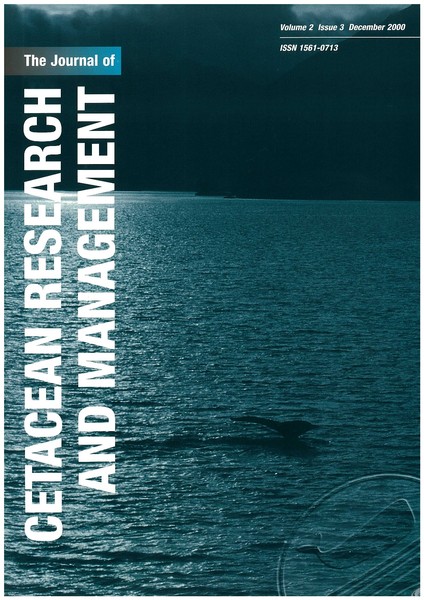Results of passive acoustic surveys for odontocetes in the Southern Ocean
Main Article Content
Abstract
Passive acoustic surveys for cetaceans were carried out from the British Antarctic Survey research vessel James Clark Ross in the region of South Georgia in the austral summer of 1998/99 and also during the IWC/CCAMLR collaborative survey in January/February 2000. The acoustic surveys were conducted concurrently with visual observations. A simple two element hydrophone array, sensitive to frequencies of between 300Hz and 24kHz, was towed on a 400m cable astern of the vessel. The total combined acoustic effort for the two surveys was 569 hours along 11,491km (6,205 n.miles) of trackline. On both surveys, stereo recordings were made for 30 seconds every two minutes. Acoustic detections were made of sperm, killer, pilot and southern bottlenose whales and hourglass dolphins. Reliable density estimates were only possible for sperm whales but the data on other species provide useful indications of relative distribution. A total of 42 individual sperm whales were detected and of these 33 were located by crossing bearings derived acoustically from several points along the trackline. Analysis of perpendicular distances pooled across both surveys gave an estimated strip half width of 8.0km (95% CI 6.4-9.9km) giving an overall density estimate for sperm whales of 0.13 and 0.19 whales per 1,000km2 from the 1998/99 and 2000 surveys, respectively. The methods supported estimates of sperm whale density using standard line-transect analyses based on perpendicular distances. The need to filter sounds below 300Hz to reduce ship noise largely precluded monitoring for mysticete vocalisations.
Article Details

This work is licensed under a Creative Commons Attribution-NonCommercial 4.0 International License.
You are free to:
- Share copy and redistribute the material in any medium or format
- Adapt remix, transform, and build upon the material
- The licensor cannot revoke these freedoms as long as you follow the license terms.
Under the following terms:
- Attribution You must give appropriate credit, provide a link to the license, and indicate if changes were made. You may do so in any reasonable manner, but not in any way that suggests the licensor endorses you or your use.
- NonCommercial You may not use the material for commercial purposes.
- No additional restrictions You may not apply legal terms or technological measures that legally restrict others from doing anything the license permits.

